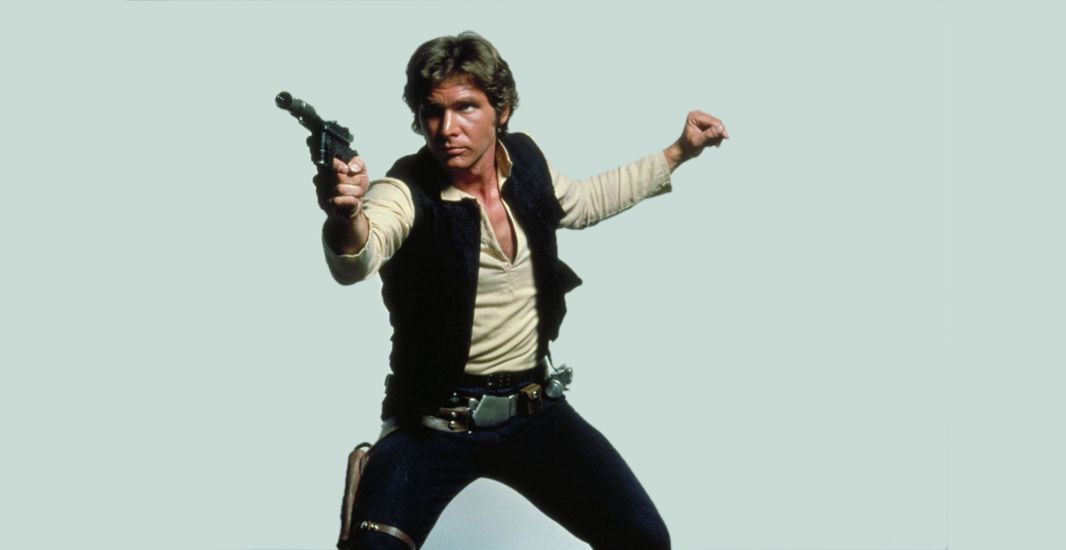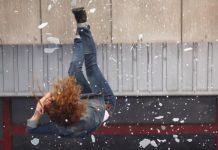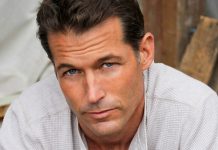From the 1500’s through the modern era, firearms have been an intricate part of our evolution. Because of this, there is no way you can’t talk about action films without addressing weapons in films. It is safe to say that man has always given his opinion strength through the use of force, and this is made evident in films dealing with the traumatic stories of war, adventures in the wild west, modern police action, spy thrillers, and even films set in futuristic worlds are often filled with laser pistols, blasters, phasers, or other high-tech weapons.
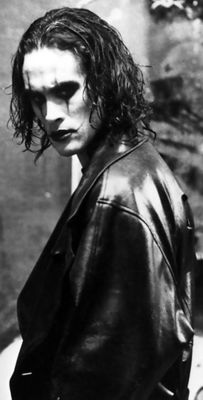
SAFETY FIRST
On mainstream projects, every safety precaution is taken and specialized personnel are hired to ensure those safety measures stay in place. But, safety often diminishes when money is not available to secure qualified weapons handlers. I personally have shown up on a set where the director’s brother pulled up in his car and had a back seat full of his “personal collection” of guns that were going to be used in the film. Numerous actors and members of the crew start handling them without supervision and some were even careless enough to start pretending to shoot at one another. Of course I immediately voiced my concern and was met with the attitude that I should just let them have a good time. I mentioned the situation to the director and he seemed equally unconcerned. He said his brother was an expert and he trusted him. I decided it best to walk off the production, which caused a lot of ruckus since I was the stunt coordinator. But I felt that position made me responsible for everyone’s safety and if I could not ensure that safety, then I could not honor the position. A few days later I got word that the Director’s brother had assumed the stunt coordinator position, and a few days after that there was an accident. One of the actors was given a weapon with live ammunition because the director wanted a good shot of “Muzzle flash.” When the actor was holstering the weapon, it went off and the bullet struck his foot. This accident was destined to happen.
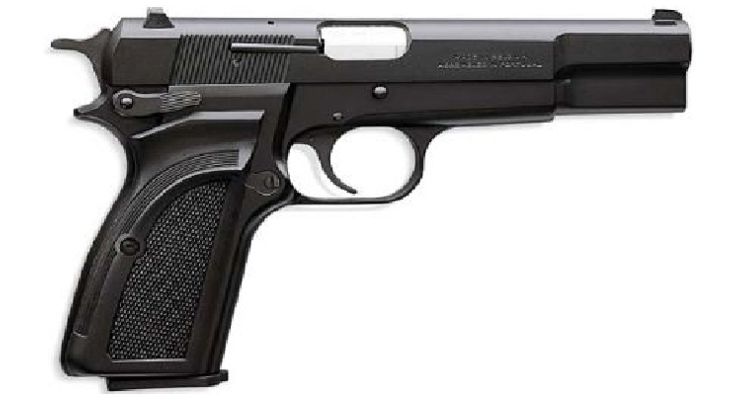
MAKE THE RIGHT CALL
In the end, it comes down to common sense, but every filmmaker should be familiar with the safety guidelines pertaining to any potentially dangerous scene in their films and they should hire the appropriate professional personnel to manage these scenes. The biggest mistake is not seeking professional help because you feel you don’t have enough money to acquire their assistance. You gave up that choice the moment you put a firearm in the scene. You should look in your local production guide and call stunt coordinators in your area for assistance. Even if they cannot help you personally, they may know someone else in the area that can. The biggest mistake is not to try. You’ll be surprised at who will help you if you just ask. Not only can these professionals provide on-set assistance, they may also be able to provide blank-firing weapons and/or prop weapons that greatly reduce the dangers involved in a scene.
HIRING TRAINED PERFORMERS
I cannot stress the importance of hiring people who are actually trained in the use of theatrical firearms. If you desire to work in the action film industry, much of this responsibility falls to you as a performer. Getting basic safety training with firearms is imperative. Although one would think the concept of firing a weapon is not difficult, the act of pulling the trigger is not what you are being hired for. You are being hired to deliver a dramatic and often very emotional scene in which a firearm is used as a tool to amplify the action. A qualified theatrical performer is expected have a solid working knowledge pertaining to;
1) Firearm types
2) How to hold the weapon
3) How to fire the weapon
4) How to move with the weapon
5) How to pose with the weapon in a fashion that reads the best for a camera.
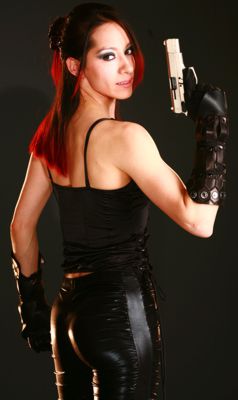
1) FIREARM TYPES
There are various types of weapon with which a performer should be trained. In cases where an actor who has had no prior training is needed to handle a weapon, they should undergo an intensive training regimen with the specific weapon(s) they will be employing as their character.
SEMI-AUTOMATIC PISTOLS AND ASSAULT WEAPONS
Semi-automatic pistols and assault weapons use part of the energy produced by burning cartridge powder to remove the used cartridge from the chamber, cock the hammer (or striker) and load a new cartridge in the chamber, so the weapon will be ready for the next shot. Cartridges are usually fed from a box magazine, located in the weapon’s handle. Box magazines may contain up to 15 cartridges (or more) in single or double columns, depending on the weapon model, and are easy (and very quick) to reload.
REVOLVERS
Revolvers got their name from the rotating (or Revolving) cylinder, which contains cartridges. Usually the cylinder holds from 5 to 7 loads, although some .22 caliber revolvers may contain up to 8-10 cartridges. Revolvers are more reliable, primarily, because of the simplicity of the design. In the case of the misfire you just got to pull the trigger again and next round will go. With a semi-auto pistol, you need sufficient power to cycle the slide, thus rendering underpowered loads ineffective at cycling to the next round in the magazine, which causes the weapon to stop firing.
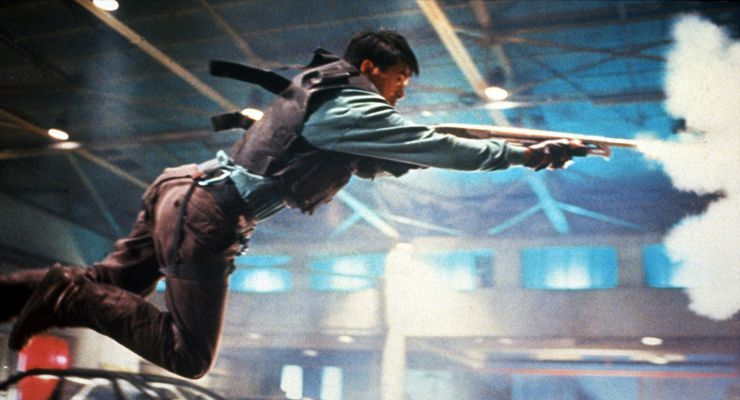
SHOTGUNS
Shotguns are often used in film because blanks known as “Poppers” are readily available at most sporting goods stores. But despite the non-dangerous sound of the word “Poppers,” they still discharge with immense force. Most shotguns can hold from 1 to 6 rounds and are cycled manually with a pump slide. These weapons can be extremely dangerous in that the blast actually covers a much larger area than most other weapons.
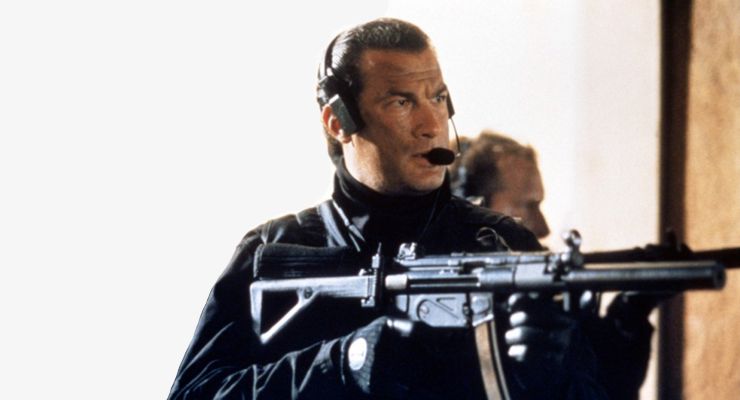
2) HOW TO HOLD THE WEAPON
The first thing that will tell the audience if the character is skilled with a weapon starts with their posture and visible comfort with the firearm. Again, holding the weapon seems like an easy thing, but if done improperly, it can completely destroy the believability of a character if they look awkward. Holding a firearm is based on three principles, the proper aligning of the skeletal structure, muscle relaxation, and balance. Good body mechanics replace strength, relaxed muscles allow for weapon recoil and balance allows the shooter to move in any direction quickly and focused. The most important factors when holding the weapon is a good overhand grip, bent arms, learning to sight properly, and strong body position.
3) HOW TO FIRE THE WEAPON
As mentioned earlier, pulling the trigger of a weapon seems like a simple process, but it is actually a science. A trigger is never jerked hard. The best technique is to “squeeze” the trigger as if the hand is constricting around the weapon. The firearm must be held properly so the recoil does not cause the weapon to jolt upward, which in the case of a semi-automatic weapon, can cause it to misfire and jam. There must not be any undo tension in the face or anxiety when squeezing the trigger, especially on multiple shot techniques.
4) HOW TO MOVE WITH THE WEAPON
Moving with a firearm can be difficult as well. Care must be taken to keep the weapon in a safe position that puts no one in danger, especially you. The best method is to point the weapon at the ground while moving. The two primary methods of movement are walking and turning. Both these techniques require small steps, good balance and a strong sense of visual targeting skill. Anytime the performer is moving without firing, a non-firing prop weapon should be used, or the weapon should be unloaded.
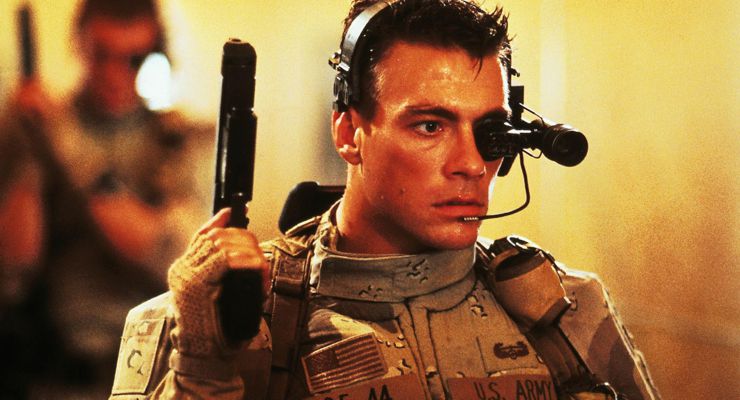
5) HOW TO POSE WITH THE WEAPON
When trying to get the best camera angles, the firearm should be regarded as a character. Learn to shoot the weapon from many angles, trying to highlight its most notable qualities. All weapons give off muzzle flash, but there are a few other special camera shots that are also powerful. With an automatic pistol or rifle, a good shot is to focus on the spent cartridges that eject from the side of the weapon after they are fired. With a revolver, the focus can be on the rotation of the cylinder or locking back the hammer. With a shotgun, the focus is on the cocking of the weapon. Other powerful shots would include spent cartridges hitting the ground or reloading a weapon.
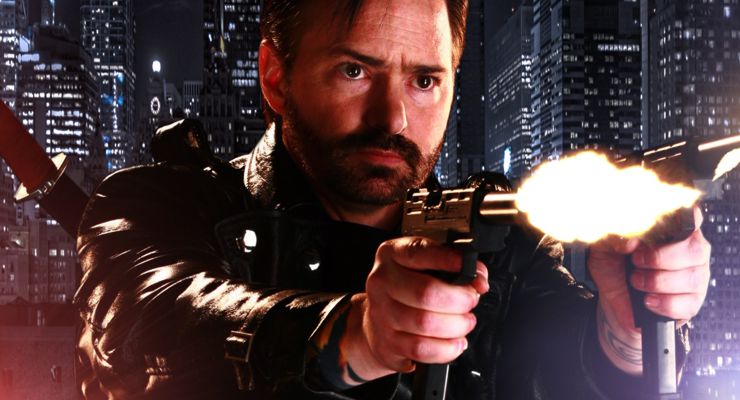
BULLET EFFECTS
The firearm involved in the scene is just one half of the overall effect. The audience wants to see the impact caused by the bullet. Again, this opens up a whole new safety issue. On mainstream productions, a Special Effects Technician who has a valid pyro-technician license is hired to set up electrically ignited charges known as “Squibs” to simulate various bullet effects. Normally these will be placed on stunt-performers who are trained to act properly when they discharge or on objects such as walls or furniture. Many times .68 caliber plastic balls called “Dust hits” or “Spark hits” are launched via an air delivery gun to simulate impacts and ricochets on non-human targets. Like firearms, all of these effects are extremely dangerous, but they also have the advantage of not being readily available to the public, so there is less chance of getting them without professional assistance. One should never try to use homemade pyrotechnic devices to create these effects. A few years ago, I was sent a video by an associate of mine that showed and actor being rigged with a firecracker attached to a plastic bag filled with blood. They rolled camera’s, lit the fuse and the actor waited, somewhat tensely, for the bang. When it didn’t happen, the actor put his hand on the bag and, of course, that is when it exploded. Although he was not badly hurt, the situation was completely out of control. If you want to create effects like these, there are non-pyrotechnic methods utilizing compressed air that are not quite as cinematically powerful as a true squib, but at least they are safe.
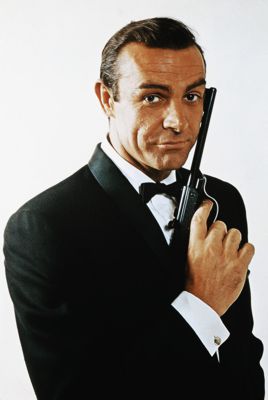
CREATIVE LICENSE – BREAKING THE RULES
There are many rules in the use of real firearms that don’t always apply to theatrical firearms. One of the most famous can be seen in the classic James Bond franchise where 007 poses with the gun held up by his head. This just isn’t a practical thing to do…but it is dramatic. In a close up shot, it allowed the intensity of Sean Connery’s eyes to be combined with the sleek power of his handgun.
We also often see the infamous “silencer” being screwed onto the barrel of a handgun to allow the user to eliminate his intended victim quietly. The problem with this is that silencers aren’t actually silent. Although they reduce muzzle flash and capture much of the escaping gas accompanying a bullets discharge, it is still louder than what we hear in Hollywood films.
One of the most common rule breakers is having a weapon fire unlimited ammunition without the need to reload. These magic weapons don’t exist, but sometimes the director (or editor) choose to disregard the need to reload in order to keep the action flowing.
Another factor in many films is the fact that the good guys can shoot six shots and kill six bad guys, whereas the bad guys will shoot dozens of rounds and miss everyone. This is especially funny when the bad guys are far up on rooftops with automatic rifles and the good guy is on the ground with a pistol.
So in essence, there is a great deal of creative license taken when it comes to the realistic use of firearms. But at the end of the day, you are a performer hired to be part of a scene. In most cases it’s not your job to micro-manage realism. But it is your job to be thoroughly prepared by familiarizing yourself with a variety of weapons, understanding and following safety guidelines, and insisting upon assistance from qualified firearms handlers so the scene is shot in the safest and most effective manner possible. Don’t risk potential injury, just do it right.
Learn more about Mark Steven Grove’s Rocky Mountain Stunts on the Martial Arts & Action Entertainment Directory by clicking on the image on the left. Rocky Mountain Stunts provides expert stunt coordinators and fight choreographers, stunt performers and set construction, prop creation, prosthetic makeup, and environmental effects.

